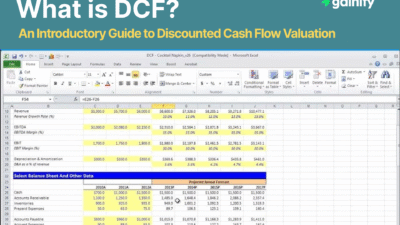Choosing between ETFs (Exchange-Traded Funds) and individual stocks is one of the most common questions for new and experienced investors alike. Both are traded on exchanges, both can grow wealth over time, and both come with unique risks. Yet the way they work and the role they play in a portfolio can be very different.
This article explores the key differences, advantages, and drawbacks of ETFs and stocks, helping you decide which may be the better fit for your investment goals.
What Are Stocks?
A stock represents ownership in a SINGLE company. When you buy a stock, you become a shareholder with a claim on that company’s profits and, often, the right to vote at annual meetings.
- Example: Buying shares of Apple ($AAPL) means you own a fraction of Apple Inc. If Apple grows and its stock price rises, your investment appreciates.
- Upside: High return potential if the company performs well. Some also pay dividends, giving you a steady income.
- Downside: If the company falters, your investment may lose significant value.
Stocks give you direct exposure to businesses you believe in, but they also carry concentrated risk.
What Are ETFs?
An ETF is a fund that pools together multiple securities (often hundreds) and trades on an exchange like a single stock.
ETFs can track stock indexes, sectors, commodities, or bonds.
- Example: The SPDR S&P 500 ETF ($SPY) holds shares of the 500 largest U.S. companies, giving investors instant diversification.
- Upside: Broad exposure, low fees, and stable long-term performance.
- Downside: ETFs move with the market, so gains are less explosive compared to picking a winning stock
ETFs are especially popular with investors seeking diversification and simplicity.
ETFs vs. Stocks: Key Differences
Feature | Stocks | ETFs |
Ownership | A slice of one company | A basket of securities |
Diversification | None (unless you own many stocks) | Built-in, often hundreds of holdings |
Risk level | High (company-specific) | Lower (spread across many assets) |
Potential return | Unlimited if the company thrives | Reflects market or sector averages |
Costs | Just brokerage fees | Low expense ratio + brokerage fees |
Research required | High (company analysis) | Low (choosing the right ETF) |
Best suited for | Active traders, stock pickers | Passive investors, long-term growth seekers |
Advantages of Stocks
Owning individual stocks can be rewarding if you’re confident in your research.
- Higher Upside Potential – A winning stock can grow 10x or more, delivering returns no ETF can match.
- Direct Ownership – You become a shareholder in a company you believe in, with voting rights and a sense of connection.
- Dividend Income – Many companies pay quarterly dividends, adding income to capital appreciation.
- Flexibility – You decide which businesses to back, and when to buy or sell.
Advantages of ETFs
ETFs are popular because they offer instant diversification and simplicity.
- Diversification – One ETF can spread your money across hundreds of companies.
- Low Cost – Expense ratios are often under 0.10%.
- Market Access – ETFs cover everything from U.S. stocks to international bonds, real estate, or commodities.
- Ease of Trading – One trade can mirror the performance of an entire index.
- Tax Efficiency – More tax-friendly than mutual funds in many cases.
For most long-term investors, ETFs are the easiest way to build wealth steadily.
Limitations of Stocks
- High Research Demand – Requires ongoing analysis of earnings, management, and industry trends.
- Company-Specific Risk – A scandal or poor quarter can cut a stock’s value dramatically.
- Lack of Diversification – Holding a few stocks exposes you to concentrated risk.
Stocks reward skill and conviction, but they require effort and tolerance for volatility.
Limitations of ETFs
- Market-Like Returns – You rarely beat the market; returns usually mirror it.
- Less Control – You own all the companies in the index, even those you don’t like.
- Specialized Risks – Niche or leveraged ETFs can introduce extra volatility.
ETFs are safer than individual stocks but may feel “average” to investors seeking excitement or outsized returns.
Which Should You Choose?
There isn’t a one-size-fits-all answer.
- ETFs fit best if you want a low-cost, diversified, and relatively hands-off approach. Perfect for retirement accounts and long-term portfolios.
- Stocks fit best if you want more control, are willing to do research, and are comfortable with higher risk in exchange for higher potential reward.
- Blended approach: Many investors build a core portfolio of ETFs for stability, then add a few individual stocks as high-conviction bets.
Key Takeaways
- Stocks offer higher potential returns but require research and carry more risk.
- ETFs provide instant diversification, simplicity, and steady long-term growth.
- Most investors use ETFs for the core and stocks for the edges of their portfolio.
- Ultimately, the choice depends on your risk tolerance, time horizon, and investing style.
Bottom line: ETFs give you the market. Stocks let you try to beat it.
❓Frequently Asked Questions
Are ETFs safer than stocks?
Generally yes, because they spread risk across many holdings. But “safe” still depends on what the ETF invests in.
Do ETFs pay dividends?
Yes. If the underlying stocks in an ETF pay dividends, the ETF usually passes them through to investors.
Can ETFs lose money?
Absolutely. ETFs still move with the market. A stock market downturn will drag ETFs down too.
Which is better for beginners: ETFs or stocks?
Most beginners start with ETFs because they provide diversification and simplicity. Stocks are better once you’re ready to do deeper research.




